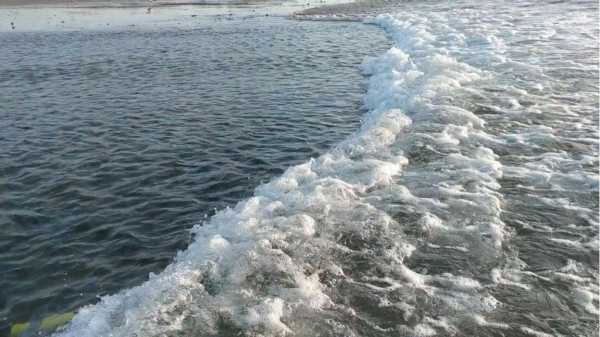Data and Code from: Measuring Turbulent Dissipation with Acoustic Doppler Velocimeters in the Presence of Large, Intermittent, Infragravity Frequency Bores
Data and Code from: Measuring Turbulent Dissipation with Acoustic Doppler Velocimeters in the Presence of Large, Intermittent, Infragravity Frequency Bores
About this collection
- Extent
-
1 digital object.
- Cite This Work
-
Wheeler, Duncan C.; Giddings, Sarah N.; McCullough, Justin (2023). Data and Code from: Measuring Turbulent Dissipation with Acoustic Doppler Velocimeters in the Presence of Large, Intermittent, Infragravity Frequency Bores. UC San Diego Library Digital Collections. https://doi.org/10.6075/J0J67H27
- Description
-
This object contains data collected from Los Peñasquitos Lagoon in Southern California as well as code to process that data according to the paper “Measuring Turbulent Dissipation with Acoustic Doppler Velocimeters in the Presence of Large, Intermittent, Infragravity Frequency Bores.” It is meant to provide reference for those looking to reproduce or build upon the methods presented in that paper.
The data is primarily 16 Hz velocity measurements obtained from 3 Nortek Vectors (Acoustic Doppler Velocimeters). Two synced Nortek Vectors were mounted, along with other instruments, on a sawhorse frame that was secured with sand anchors into the bed at the second bend of the main channel, roughly 300 meters upstream of the mouth. A third, bottom frame mounted, upward looking Vector was deployed roughly 250 meters further upstream. All three Vectors started sampling at midnight on February 2nd and collected data continuously at 16 Hz, with 5 second breaks every hour to write the data to memory. One of the synced Vectors stopped sampling the afternoon of February 11th due to memory limitations. The other two Vectors had synced optical back scatter measurements and started sampling for only short bursts starting the morning of February 14th due to low battery, making later data unusable. Data from a nearby National Estuarine Research Reserve station are also included to provide a pressure correction for the Vector data. All data files are stored as NetCDF files.
The code is meant to take the raw velocity data, clean it, de-spike it, generate vertical velocity wavenumber spectra, and calculate turbulent dissipation values. The purpose of the paper was to understand how non-linear, intermittent, infragravity frequency bores affected existing de-spiking, spectrum calculation, and dissipation calculation methods, and create new working algorithms. As part of this, several error analysis and tolerance test data files are also included. - Date Collected
- 2020-02-02 to 2020-02-14
- Date Issued
- 2023
- Authors
- Data Contributor
- Thesis Advisor
- Funding
-
The data presented here were collected and processed with support from NOAA’s National Centers for Coastal Ocean Science (NCCOS) Competitive Research Program under Award NA18NOS4780172 to SIO and the National Science Foundation Graduate Research Fellowship Program under Grant DGE-2038238. The work was also partially funded by California (CA) Department of Parks and Recreation Division of Boating and Waterways Oceanography Program under Contract C1670005 with SIO.
- Geographic
- Topics
Formats
View formats within this collection
- Language
- English
- Identifier
-
Identifier: Duncan C. Wheeler: https://orcid.org/0000-0002-7724-0745
Identifier: Sarah N. Giddings: https://orcid.org/0000-0003-0726-4781
- Related Resources
- Wheeler, Duncan C. & Giddings, Sarah N. (2022). Measuring Turbulent Dissipation with Accoustic Doppler Velocimeters in the Presence of Large, Intermittent, Infragravity Frequency Bores, Journal of Atmospheric and Oceanic Technology. https://doi.org/10.1175/JTECH-D-21-0144.1
- Processed data and plots were generated from python code in the Data processing code component, which is also located on GitHub: https://github.com/dcwheeler/IG-Dissipation-Processing-Code
- Data processing code (IG-Dissipation-Processing-Code) is also available on GitHub: https://github.com/dcwheeler/IG-Dissipation-Processing-Code
Primary associated publication
Software
Other version
 Library Digital Collections
Library Digital Collections
